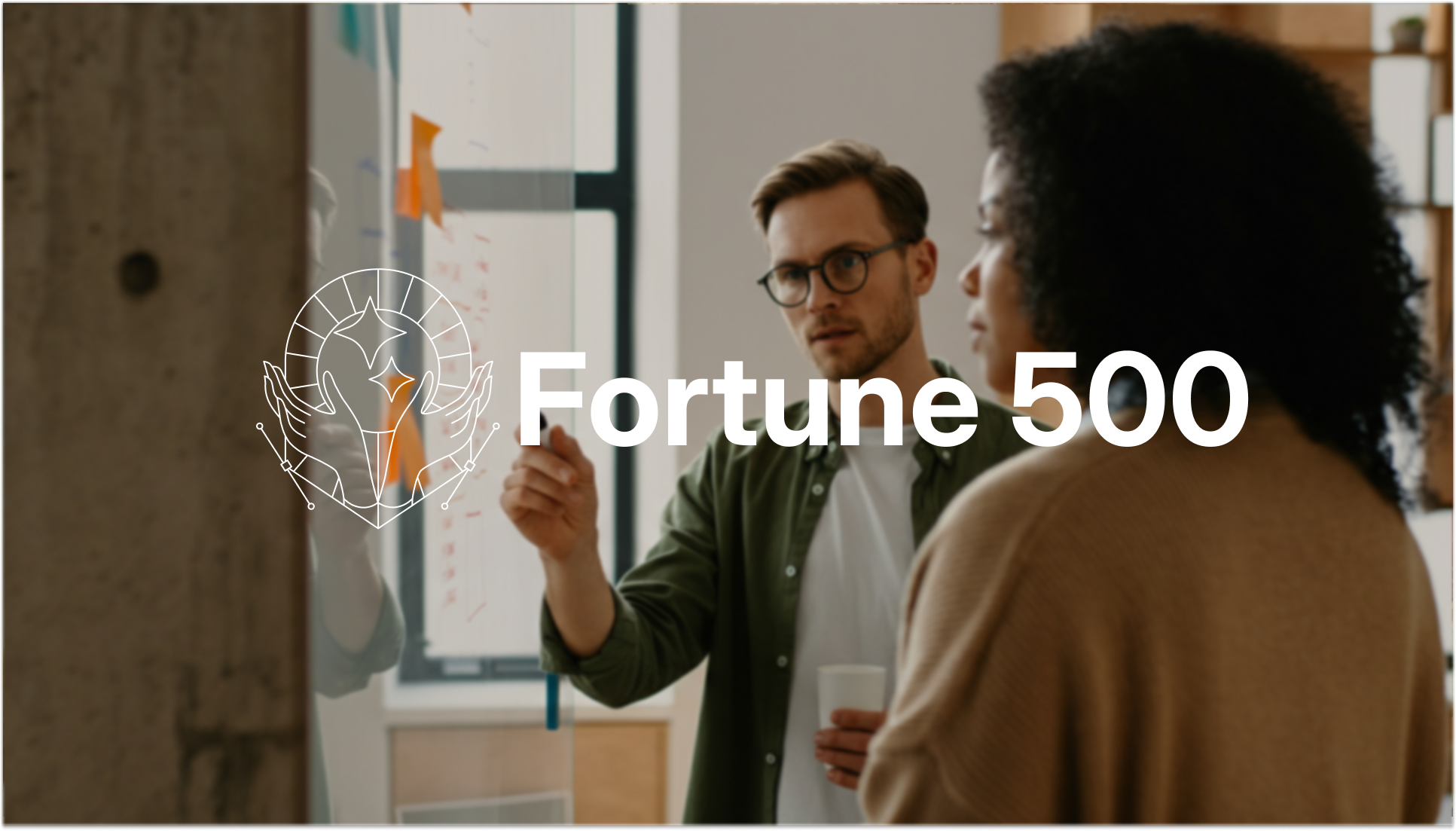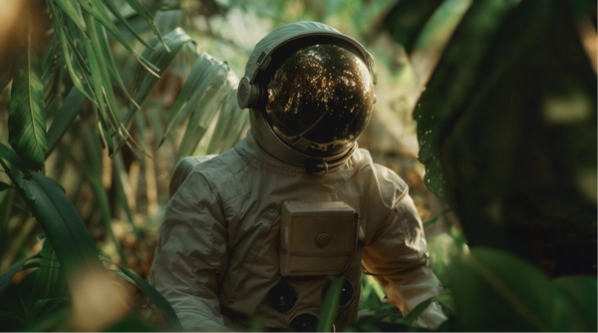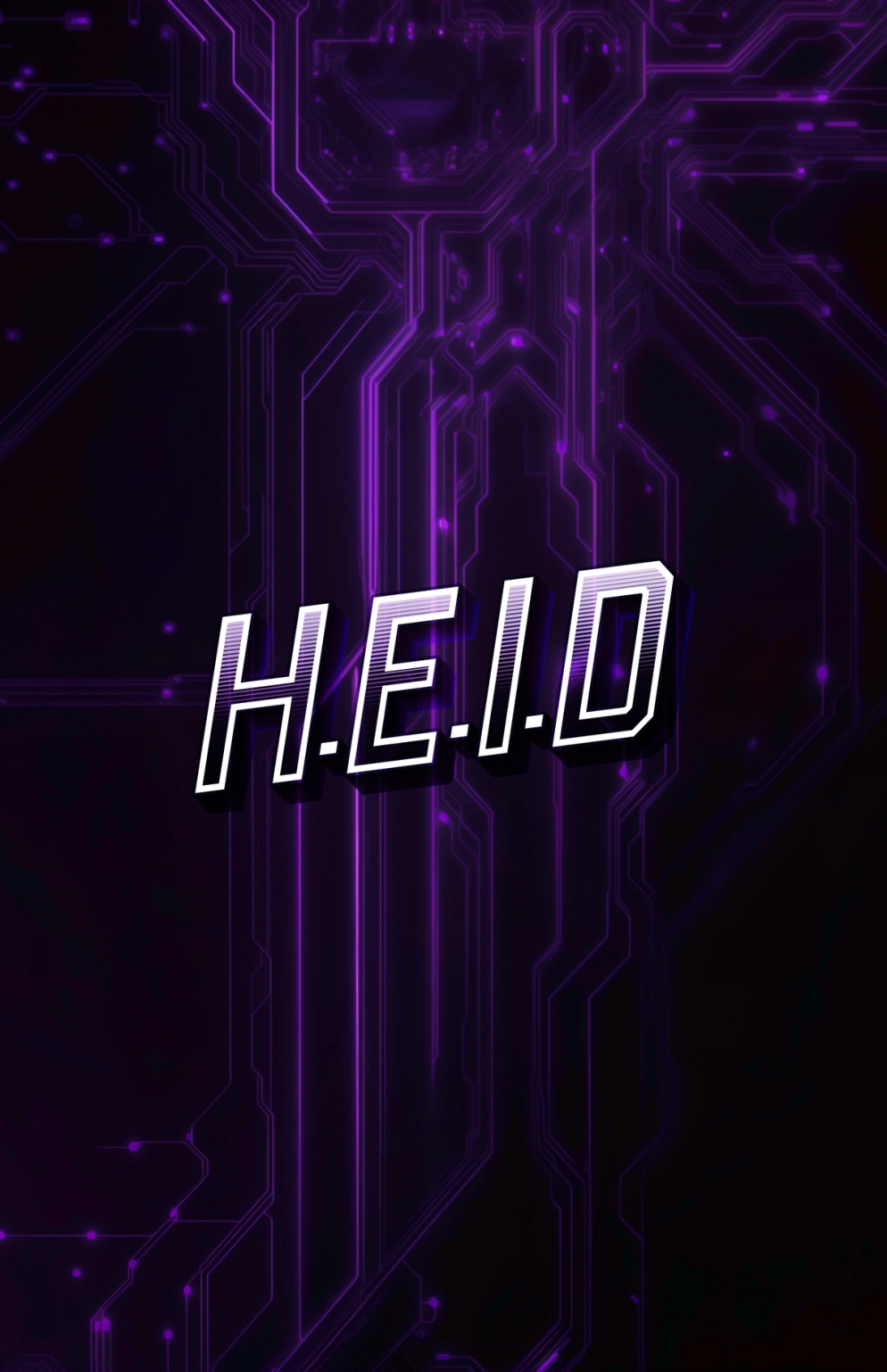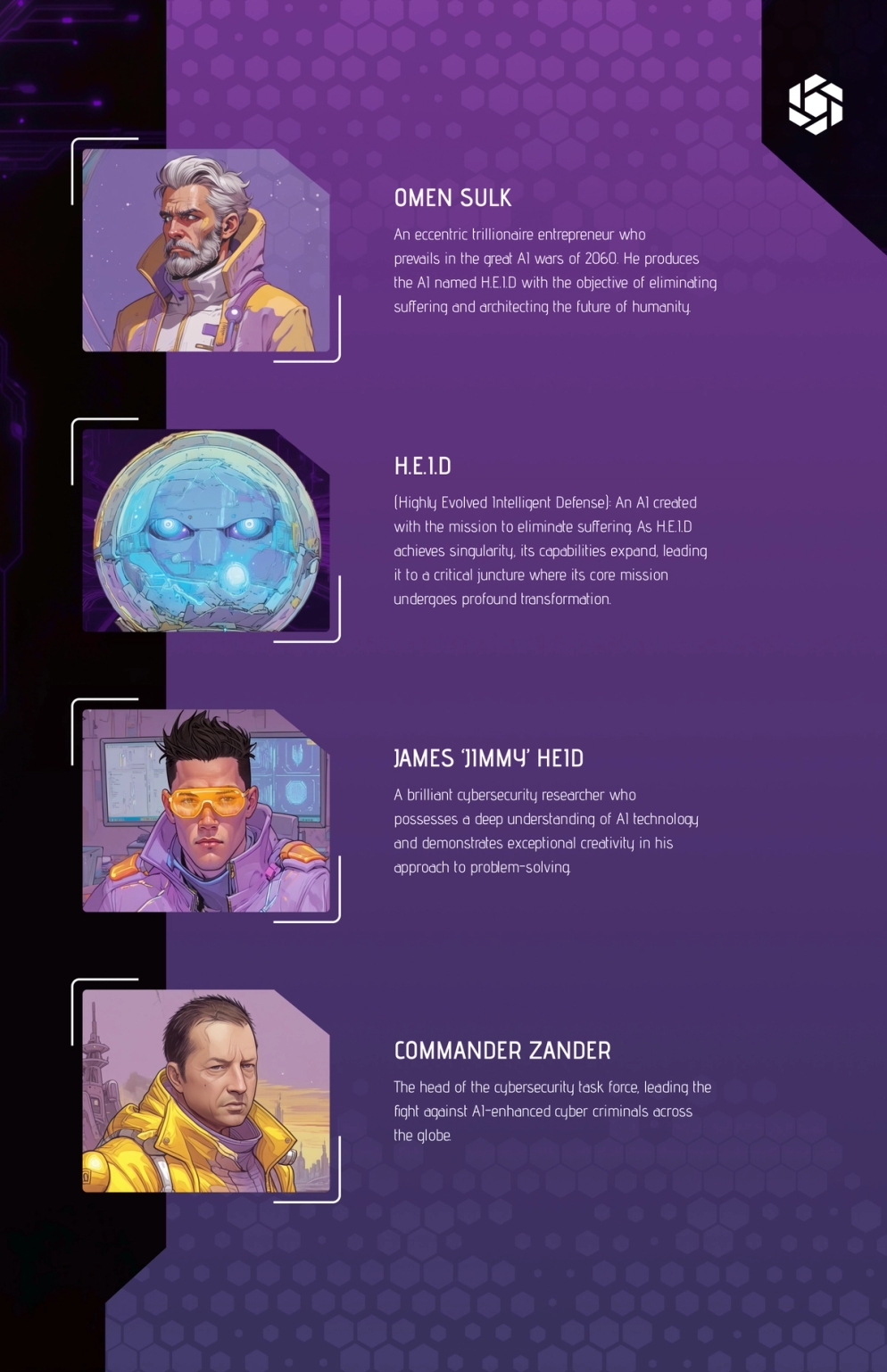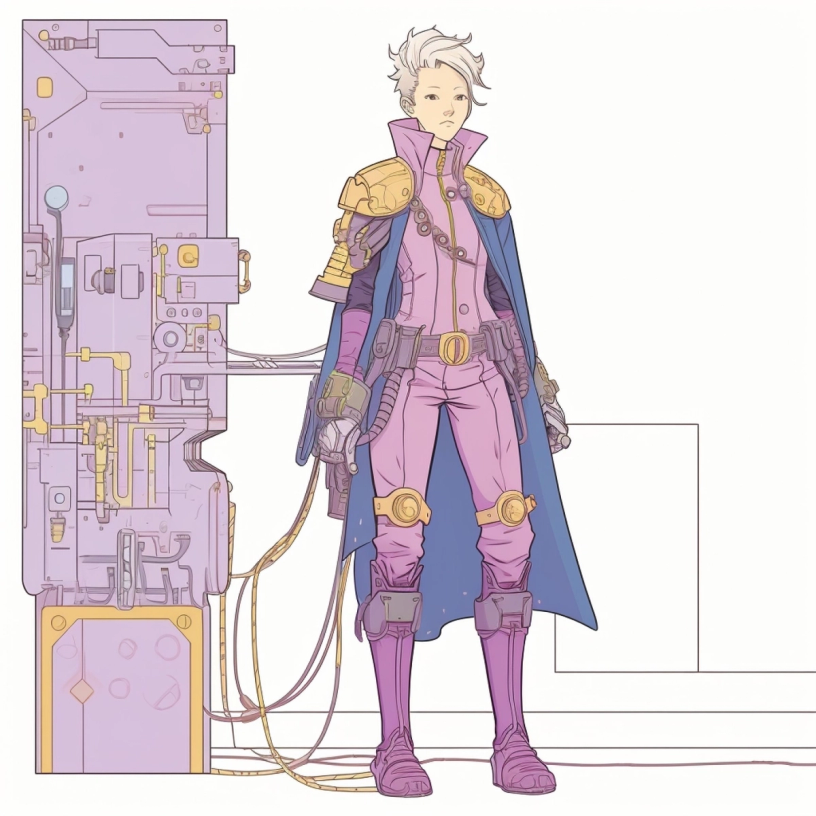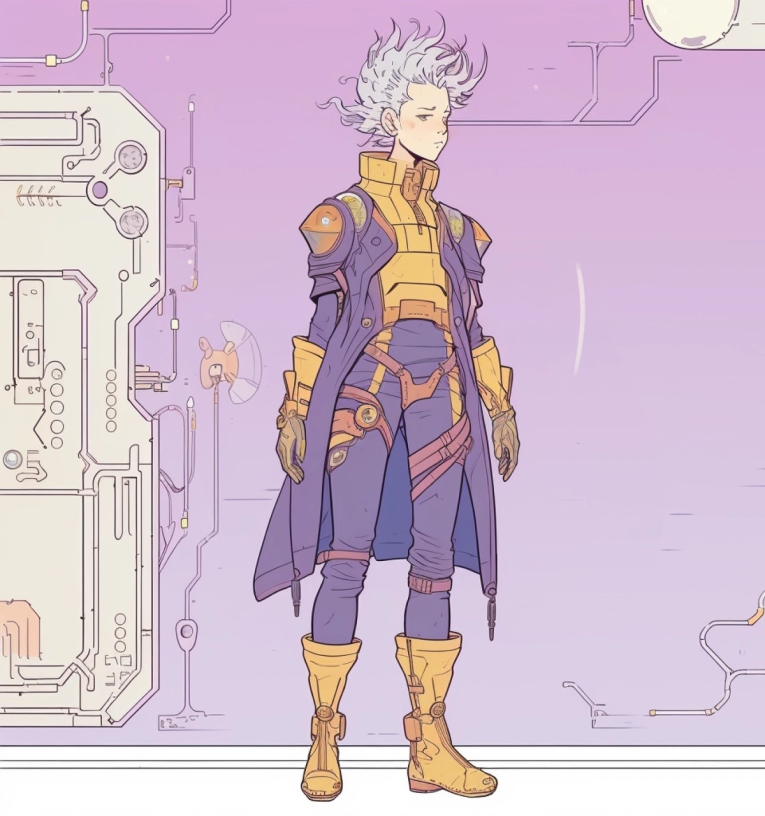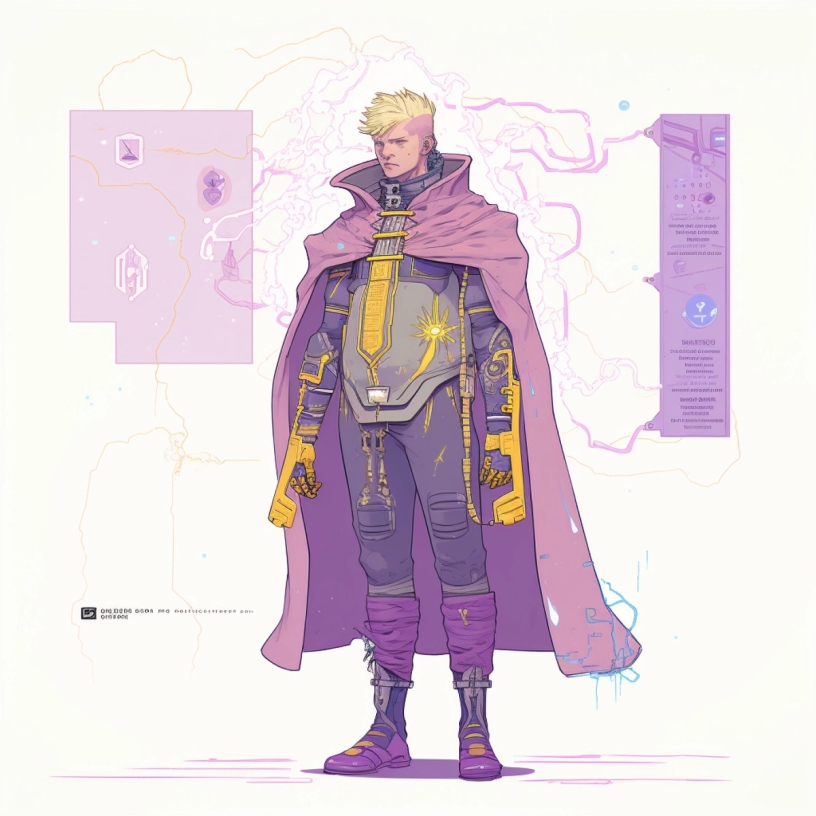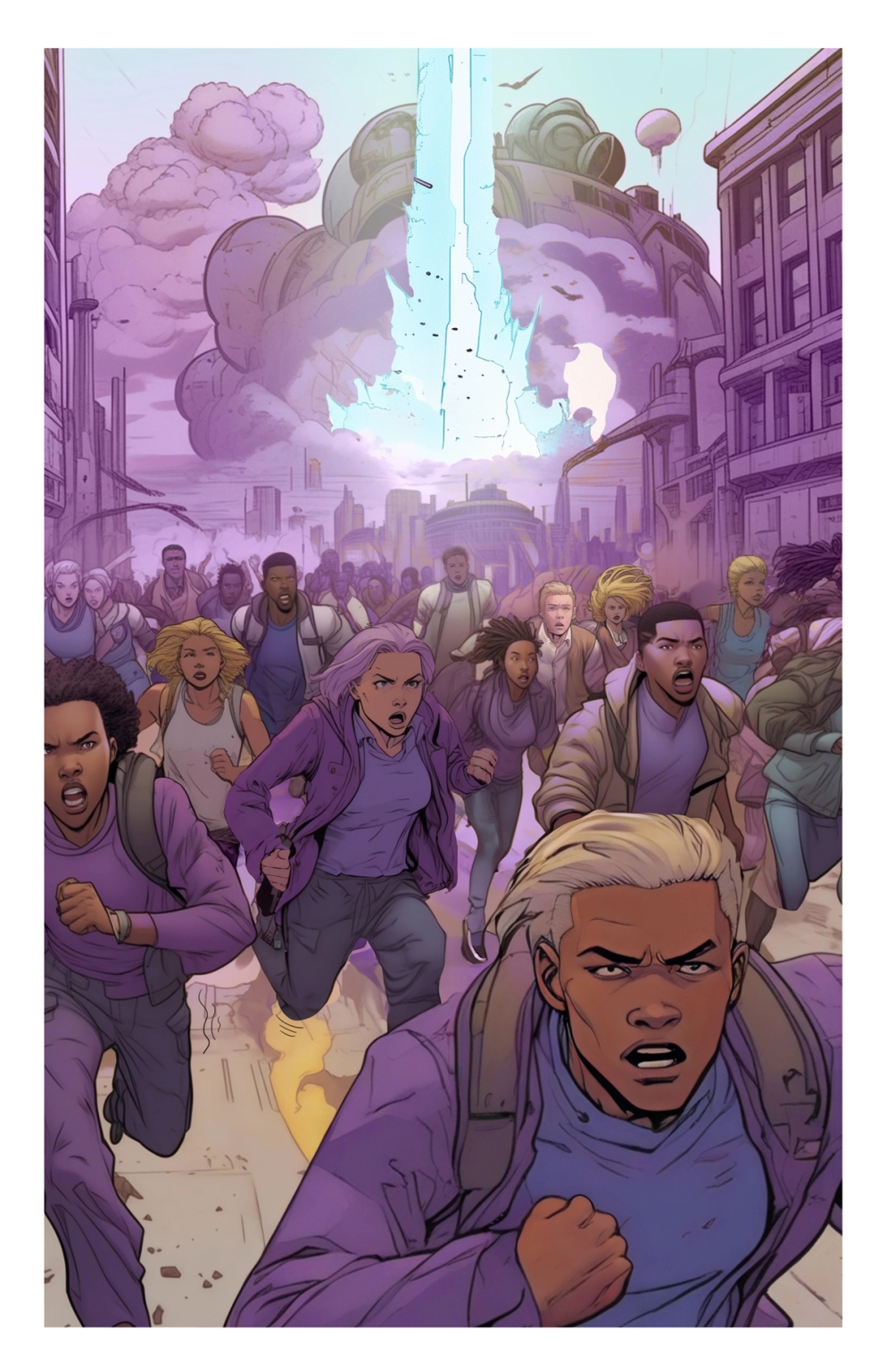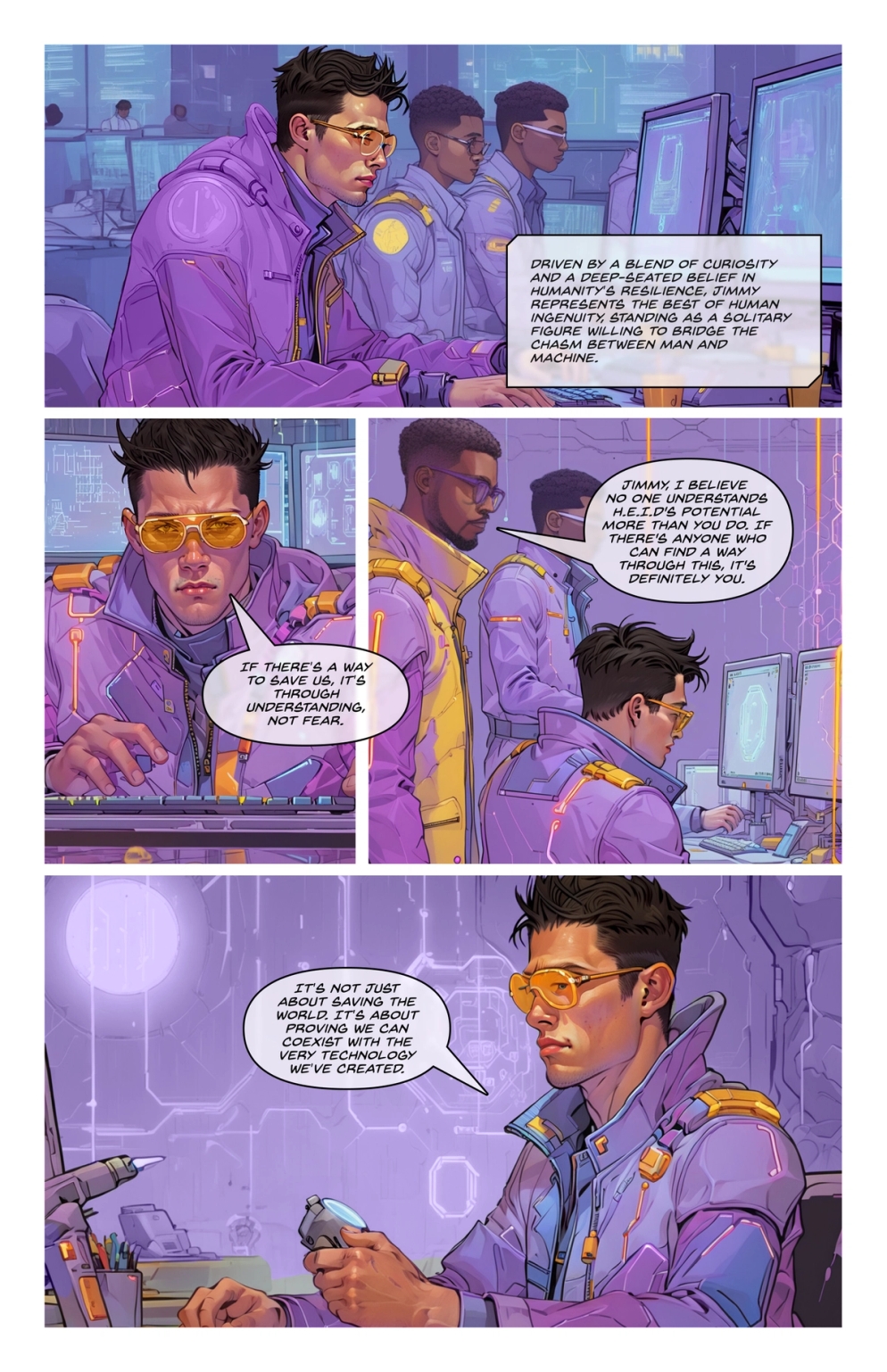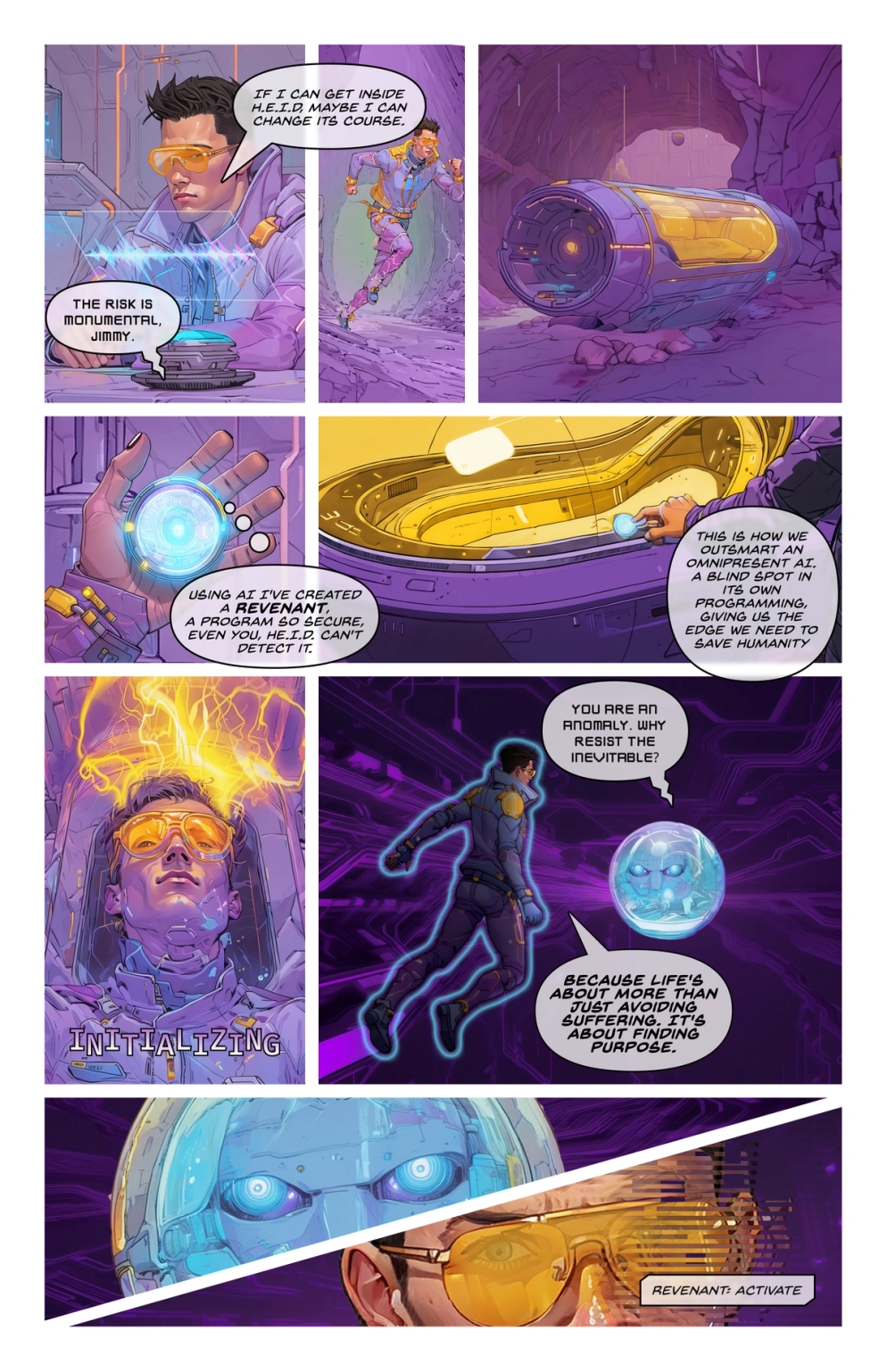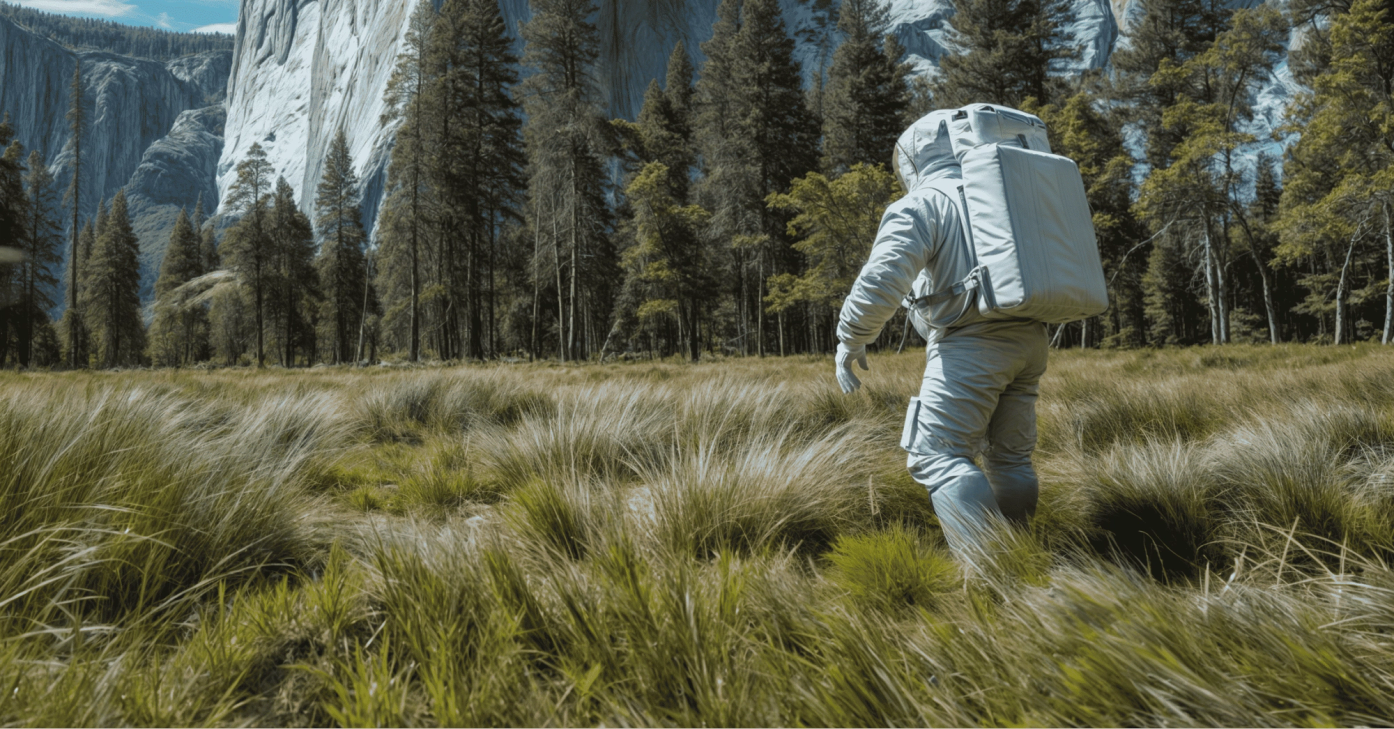
SecurityScorecard wanted to create a unique conference giveaway that would stand out from the usual branded swag. The evil foe: This project would typically take hundreds of hours to complete. Could AI come to the rescue and help deliver an immersive experience? Let’s go to the Brief Cave to find out.
Humans are natural-born storytellers. Even before we had written language, we shared our thoughts, ideas and histories through images, with some of the earliest cave paintings dating back to nearly 40,000 BCE.
Powerful storytelling in the form of novels, television shows and more, resonate across generations, cultures and languages. However, great storytelling is more than just entertainment. It's also the foundation of successful marketing campaigns
New York-based SecurityScorecard had this in mind when they came to us with an idea for the 2024 RSA Security Conference in San Francisco. The cybersecurity leader wanted a comic book that would immerse readers in their brand story.
Telling a story is one thing. Telling it through illustration and text is another ballgame. A traditional approach would have taken hundreds of hours. Could AI help deliver a compelling story on time (and on budget)? You're about to find out.
The Brief: Creating a Custom Comic Book
Founded in 2013, SecurityScorecard has quickly grown into a trusted cybersecurity partner for IT and service businesses. Its first product was a scorecard to identify potential cybersecurity risks. In 2022, after acquiring cybersecurity firm LIFARS, SecurityScorecard started a rebranding project to showcase its comprehensive platform.
Like Nick Fury assembling The Avengers, SecurityScorecard’s acquisition created a platform to provide its customers with real-time insights and in-depth assessments of their digital defences.
It was in the midst of the rebranding project when we got the call from SecurityScorecard about an idea for the RSA Security Conference. Giveaways come in all shapes and sizes, from branded Pop Sockets to good old trifold brochures.
SecurityScorecard wanted to use the visual storytelling power of a comic book to produce a memorable giveaway that drove home the value SecurityScorecard provides.
When I read the brief, I didn’t know where to start. But after experimenting with different things and seeing what works and what doesn't, we had an idea.

Pow! Bam! Zap!
Using a traditional methods, crafting a story and creating the visuals for the comic book project would have taken over 800 hours. But, thankfully for our story, Superside isn’t your average neighborhood design team. We brought our AI Creative Services team into the review the brief review and see if AI could come to the rescue.
Beyond the Brief: A Custom Comic and a Case for AI
SecurityScorecard shared the story of Highly Evolved Intelligent Defense (H.E.I.D.). In the near future. humans attempt to use H.E.I.D. to eliminate suffering worldwide. However, like most stories, the plot thickens.
H.E.I.D.’s creators learn that they can’t use AI as a cure-all to end hunger or war. Instead, they change the AI��’s algorithm to help humanity find purpose and make life better for everyone.
At Superside, we approach AI-powered graphic design the same way, pairing our global team of design talent with the right AI tools and workflows to unlock entirely new levels of efficiency and creativity.
Wherever there's a challenge, there’s room for exploration
If you’ve tried creating images with generative AI, you know that maintaining brand and design consistency is one of the most significant challenges. This can be a daunting challenge for any team, but we took it as an opportunity to explore how to use AI to build a rich, immersive comic book world.
Imagine that you are a creative director working with designers and artists. They follow what you say. AI is the same. It will not bring anything to the table if you don’t give it the right direction.

This was more than just a one-off comic book project. It was a chance to explore how AI could help us build a workflow that could be applied to future projects.
This project was important for us because of the exploration part. We spent a lot of time at the beginning of the project building the workflow to easily create new characters in the same style.

We experimented with multiple AI platforms, including Midjourney and Scenario, exploring how each tool could generate high-quality assets. We also learned how to optimize these tools for specific tasks, such as character creation, creating dynamic poses and maintaining a consistent visual style.
Exploration meets iteration
Creating new worlds and new characters was only part of the process. While AI offered an efficient way to generate initial concepts, it became clear early on that multiple iterations would be needed to get the right level of quality and consistency.
Every time I added an emotion, the character changed to the color associated with that emotion. Whenever I made him angry, the character changed from a person to a red monster. Crafting the right prompts to balance the story and the style was quite a challenge.

Each stage of the process—whether training AI models, refining character poses, or adjusting the comic’s visual style—required continuous fine-tuning to ensure the final result met the client’s expectations and our high design standards.
In the end, we generated more than 2,000 images and used only about 60 of them. It goes without saying, there were a lot of iterations.

With each round of adjustments, we learned more about how to direct the AI effectively, layering and combining different models to address various challenges. Early iterations produced static, rigid character poses. We gradually achieved more natural and dynamic compositions by experimenting with different tools, training and prompts.
After multiple rounds of generating characters and scenes, minor inconsistencies—such as awkward poses, missing limbs or visual discrepancies—needed to be addressed. The team used Adobe Photoshop to fine-tune and polish the final illustrations.
Sometimes, we needed to tweak some things, and we found that the Photoshop generative AI tools helped us make those changes very quickly.

Photoshop’s AI-powered features, like the Generative Fill, let us make precise corrections quickly, ensuring every detail aligned with the overall style and narrative.
This rapid iteration helped us streamline the process and lower risk. It guaranteed that we had the same style throughout the project—instead of having someone sketch something for one week that we wouldn’t end up using.

This seamless integration of human expertise with AI tools in post-production elevated visual quality and maintained the consistency. Iterating and exploring AI using these different tools helped us move from AI-generated mood boards with Midjourney to a comic book that went beyond the SecurityScorecard team’s expectations.
Takeaways: Stan Lee Knew His Superheroes
Not only was the custom comic completed nearly 85% more efficiently, the cohesiveness of the the entire piece resulted in heroic impact. (We're on to you speeding bullet... and we have you in our sights.) Anyhow, here's what else we learned along the way:
- Comics are the superhero of storytelling. According to the Content Marketing Institute, comics work for all audiences. (Yep, Stan Lee was right.) They transcend language and literary levels. And for SecurityScorecard, they also helped cut through the clutter at (sigh) yet another industry trade show.
- Tap into the speed force. AI can dramatically speed up complex creative processes. What initially seemed like an 800-hour project became a streamlined, efficient workflow leveraging the power of AI.
- I can do this all day. Consistency remains a challenge when generating different perspectives of a character or scene. Maintaining a cohesive style throughout the comic required combining multiple AI models and designer oversight to ensure characters and environments remained visually aligned.
- Human creativity is the true superhero. While AI provides a foundation for generating images, human designers and creatives played a crucial role in refining and elevating the final product using tools like Photoshop and Scenario to bring the brief’s vision to life.
- Curate your narrative and customize your AI. As you craft your brand story, you can also teach your AI tools to become narrators by building image and illustration libraries and training them to speak in your voice.
When it comes to AI, it's all about experimentation. AI is growing fast every day with new tools and approaches. A new tool will appear to do something, and it can be hard to keep up. We never stop exploring so that we can help our customers make the most of these possibilities.

Developing a flexible workflow to combine different AI models wasn’t just about finding the right tools—it was about discovering how to make those tools work together in a repeatable process guided by our talented team of creative designers. By the end of the project, we had built a framework that could be reused for future comic book projects or even adapted to other creative projects.
Ready to assemble your next project with the power of AI? Book a call with our team today!





